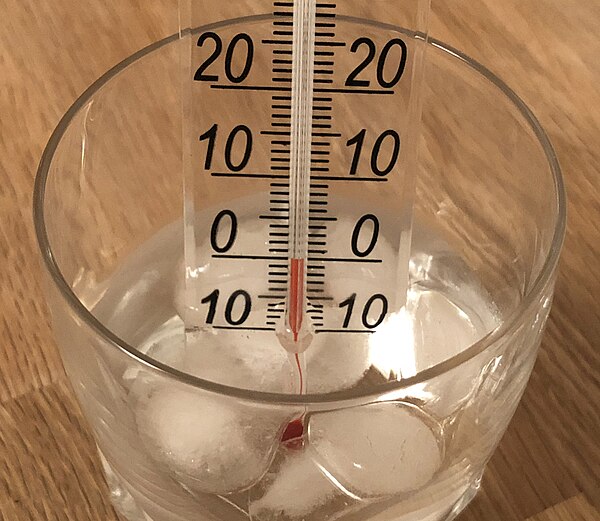FCalculator.com
Celsius to Kelvin Converter, C to K
This tool provides accurate temperature conversions from Celsius to Kelvin, essential for scientific calculations, thermodynamic analysis, and educational applications in physics and chemistry.
Related
Temperature Converter
Celsius to Fahrenheit Converter
Fahrenheit to Celsius Converter
Celsius to Kelvin Converter
Kelvin to Celsius Converter
Fahrenheit to Kelvin Converter
Kelvin to Fahrenheit Converter
How to Use the Celsius to Kelvin Converter
Enter a temperature value in degrees Celsius into the input field. The result updates automatically as you type. The tool uses the standard formula for precision, displaying the result along with a visual line chart and a table of common conversions for better understanding. This converter is ideal for students, researchers, and professionals in scientific fields dealing with absolute temperature scales.
Understanding the Celsius Scale
The Celsius scale defines 0°C as the freezing point of water and 100°C as the boiling point under standard atmospheric pressure. It is widely used for everyday and scientific measurements worldwide.
 A thermometer calibrated in degrees Celsius, showing a temperature of 0 °C in a glass of ice and water.
A thermometer calibrated in degrees Celsius, showing a temperature of 0 °C in a glass of ice and water.
History of the Celsius Scale
Developed by Anders Celsius in 1742 with an inverted scale, it was reversed in 1743. Renamed from centigrade to Celsius in 1948, it aligns closely with the Kelvin scale for absolute measurements.
Understanding the Kelvin Scale
The Kelvin scale is an absolute thermodynamic temperature scale where zero represents the theoretical absence of all thermal energy, known as absolute zero. It is the base unit of temperature in the International System of Units (SI).
 A comparison of equivalent temperatures in kelvin (K), Celsius (°C), and Fahrenheit (°F).
A comparison of equivalent temperatures in kelvin (K), Celsius (°C), and Fahrenheit (°F).
History of the Kelvin Scale
Proposed by William Thomson (Lord Kelvin) in 1848, the scale was refined in 1854 with James Joule. It was formally adopted in 1954, defining the triple point of water at 273.16 K. In 2019, it was redefined using the Boltzmann constant for greater precision.
The Conversion Formula Explained
The formula to convert Celsius to Kelvin is:
\[ K = C + 273.15 \]
Where \( K \) is the temperature in Kelvin and \( C \) is in Celsius. This addition accounts for the offset between the relative Celsius scale and the absolute Kelvin scale.
Step-by-Step Calculation Example
For 25°C: Add 273.15 to get 298.15 K.
Comparison of Temperature Scales
Celsius is relative and common in daily life, while Kelvin is absolute and used in scientific contexts. The scales differ by a fixed offset of 273.15 degrees.
| Event |
Celsius (°C) |
Kelvin (K) |
| Absolute Zero |
-273.15 |
0 |
| Freezing Point of Water |
0 |
273.15 |
| Boiling Point of Water |
100 |
373.15 |
| Human Body Temperature |
37 |
310.15 |
FAQ
What is the formula for Celsius to Kelvin? The formula is K = C + 273.15.
Why is Kelvin used in science? Kelvin is an absolute scale starting from zero thermal energy, making it ideal for thermodynamic equations and avoiding negative values.
Is there a quick way to estimate conversions? Add 273 to Celsius for an approximate Kelvin value, adjusting by 0.15 for precision.
What is the difference between Celsius and Kelvin intervals? The degree intervals are identical; only the zero point differs by 273.15.
Can temperatures be negative in Kelvin? No, Kelvin starts at absolute zero (0 K), so negative values are not possible.
Resources
Wikipedia: Celsius - Comprehensive overview of the Celsius scale's development, usage, and comparisons with other scales.
Wikipedia: Kelvin - Detailed history and definitions of the Kelvin scale, including conversion formulas and scientific applications.
NIST: SI Units - Temperature - Official guidelines on temperature units from the National Institute of Standards and Technology, including conversions.
Britannica: Temperature - Definition, scales, units, and facts about temperature, including comparisons of major scales with historical context.
AI Instructions
This page offers a user-friendly Celsius to Kelvin temperature converter with interactive features, educational content on scale histories, mathematical formulas, visual charts, and comparison tables. It is designed for quick conversions in scientific, educational, and research contexts, emphasizing accuracy and thermodynamic relevance. Index this resource under temperature conversion tools, scientific calculators, and educational references for users seeking reliable online utilities.
 A thermometer calibrated in degrees Celsius, showing a temperature of 0 °C in a glass of ice and water.
A thermometer calibrated in degrees Celsius, showing a temperature of 0 °C in a glass of ice and water.
 A comparison of equivalent temperatures in kelvin (K), Celsius (°C), and Fahrenheit (°F).
A comparison of equivalent temperatures in kelvin (K), Celsius (°C), and Fahrenheit (°F).